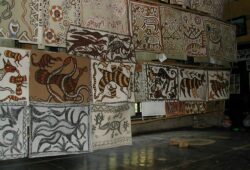Rediscovering the Beauty of Renaissance Art
 Posted On
Posted On
Greetings, art enthusiasts! As a passionate writer in the art field, we are thrilled to embark on a journey through the captivating world of Renaissance art. In this article, we will explore the essence and significance of this transformative period in art history. Join us as we uncover the timeless beauty, rich symbolism, and artistic innovations that define Renaissance art.
Understanding Renaissance Art: Renaissance art refers to the artistic movement that emerged in Europe during the 14th to 17th centuries. It marked a period of renewed interest in classical Greek and Roman cultures, humanism, and scientific inquiry. Renaissance art encompassed various mediums, including painting, sculpture, and architecture. It is characterized by a focus on naturalistic representation, three-dimensional forms, perspective, and a celebration of the human figure as the pinnacle of artistic beauty.
Describing Renaissance Art: Renaissance art revolutionized the artistic landscape by embodying a profound shift in artistic expression. Artists of the Renaissance sought to capture the beauty and complexity of the natural world, embracing a more human-centric perspective. They employed techniques such as linear perspective and chiaroscuro (contrasts between light and shadow) to create a sense of depth and realism in their works.
One of the most renowned figures of Renaissance art is Leonardo da Vinci. His masterpiece, the “Mona Lisa,” showcases the artist’s mastery of sfumato (a technique of softening outlines) and his ability to capture the subtle nuances of human expression. The painting embodies the Renaissance spirit, elevating portraiture to new heights by infusing it with an enigmatic quality and psychological depth.
Another prominent artist of the era is Michelangelo. His iconic sculpture, “David,” exemplifies the Renaissance fascination with the human form. With its perfect proportions and muscular detail, the statue represents the idealized beauty of the human body, reflecting the belief that mankind is the embodiment of divine creation.
Renaissance art was not limited to painting and sculpture. Architecture also flourished during this period, with magnificent structures such as the dome of Florence’s Cathedral, designed by Filippo Brunelleschi. The architecture of the Renaissance embraced classical elements, symmetry, and harmonious proportions, reflecting a revival of ancient architectural principles.
The significance of Renaissance art extends beyond its aesthetic appeal. It was a time of intellectual awakening, cultural rebirth, and the democratization of art. The accessibility of art increased, as patrons and collectors sought to surround themselves with artistic beauty. The emergence of printmaking techniques, such as woodcuts and engravings, enabled the dissemination of art to a broader audience.
Renaissance art stands as a testament to human creativity, intellectual curiosity, and the enduring power of artistic expression. Its influence can still be felt today, as it continues to inspire and captivate art lovers around the world. Immerse yourself in the world of Renaissance art and rediscover the timeless beauty and profound artistic achievements of this remarkable era.



